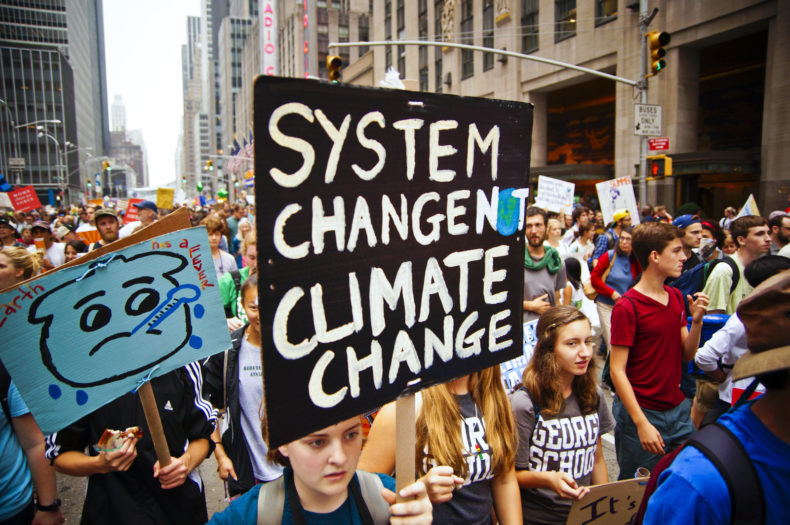When my mother named me Cassandra, she didn’t know anything about Greek mythology. She had never heard of the princess who prophesied the destruction of Troy. But I inherited some of Cassandra’s attributes all the same. I’m a doom-and-gloom kind of girl. My visions of the future involve illness, poverty, and untimely deaths. Each headache surely heralds a brain tumor. Each sidewalk stumble will no doubt beget several busted teeth.
But unlike Cassandra of Troy, I’m a terrible soothsayer. My visions are mostly wrong. This fact allows me to revel in worst-case scenarios without entirely believing they’ll come true. I get to spout death and destruction, yet I still manage to get up each morning and face the day. I know the worst probably won’t come to pass.
But what if it does?
For years I have been telling myself that my terror over climate change is unwarranted. Sure, a lot of bad things could happen, but they probably won’t. With each passing year, however, the news gets worse. Corals are dying, seas are rising, and enormous ice shelves are calving. The facts are irrefutable. And the voice inside my head, that welcome counterweight to my outward pessimism, has fallen silent. I imagine the worst, but this time I can’t convince myself that I’m wrong.
I’m not the only one predicting doom. This week New York magazine ran a cover story called “The Uninhabitable Earth.” In a terrifying 7,300-word feature, David Wallace-Wells argues that the impacts of climate change will be far worse—and happen far sooner—than most of us realize. “Absent a significant adjustment to how billions of humans conduct their lives, parts of the Earth will likely become close to uninhabitable, and other parts horrifically inhospitable, as soon as the end of this century,” he writes. “No matter how well-informed you are, you are surely not alarmed enough.”
Wallace-Wells’ Apocalyptic vision dominated my Facebook feed, but for days I couldn’t bring myself to read the story. Yesterday, however, I dove in. Because, as Wallace-Wells points out, “aversion arising from fear is a form of denial, too.”
This is not an enjoyable read. It’s hard to imagine how Wallace-Wells could have painted a bleaker picture. I may have a gloomy outlook on life, but when it comes to climate catastrophe, I haven’t imagined the worst, not even close—at least not with the vivid detail that Wallace-Wells has.
By the end of section two, “Heat Death,” my throat was tight and my heart was hammering. I couldn’t hear it over the whine of the air conditioner, but I could feel it thumping against my rib cage. By section four, “Climate Plagues,” dying in a flu pandemic seemed like the best possible outcome. And that was where I stopped. I couldn’t do much more than skim the other five sections—everything from toxic oceans to economic collapse—without risking my mental health. I am a doom-and-gloom kind of girl, but apparently even I have limits.
Wallace-Wells isn’t a fortune teller. He points out that these are unlikely scenarios. Still, some critics worry that such pessimistic articles will fuel an epidemic of “ecoanxiety” without prompting any action on climate change. “If you’re trying to motivate people, scaring the shit out of them is a really bad strategy,” writes Grist’s Eric Holthaus. “Presented with the idea that the planet that gives us life might be dying, parts of our brain shut down. We are unable to think logically.”
Holthaus is right, of course. I’m a perfect example of someone who has been crippled by climate panic. But other strategies don’t seem to be inspiring much action either. According to a 2009 survey by the Pew Research Center, only 49% of Americans believe that human activity is the primary cause of climate change. Today that number is 48%. What will it take to move the needle?
In 2009, Paul Krugman wrote that “climate scientists have, en masse, become Cassandras — gifted with the ability to prophesy future disasters, but cursed with the inability to get anyone to believe them.” That’s still true today. But these prophesies aren’t the rantings of wild-eyed fortune tellers; they’re based on decades of meticulous data collection. We can’t afford to bury our heads in our pillows any longer. We already risk at least some of Wallace-Wells predictions coming true.
***
Image courtesy of Joe Brusky on Flickr
